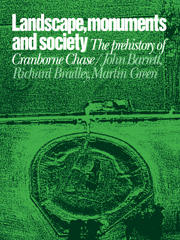6 - The Late Bronze Age and Iron Age
Published online by Cambridge University Press: 07 May 2010
Summary
Introduction
It is now more than twenty years since the origin of the British Iron Age was debated in terms of either invasion or indigenous development. Hawkes (1959) established a subtle temporal and spatial classification of the British material, which mapped its suggested continental origins and indigenous development. However, the general application of the ‘Invasion Hypothesis’ was soon challenged (Clark 1966), and the specific treatment of the British Iron Age in these terms was criticised in detail by Hodson (1960 and 1964). Both Hodson and Hawkes accepted the basic premise, that analysis depended upon matching cultural traits over time and space. By this means Hodson established the claim that the British Iron Age contained a core of cultural traits (the ‘Woodbury Culture’), whose origins lay within the indigenous Bronze Age.
Not only did both writers accept that a ‘cultural’ analysis was the valid framework within which to work; they also operated within the terms of national archaeologies. It is from this perspective that movement of peoples between (say) Wessex and East Anglia may be presented as an ‘indigenous’ process, whilst movement between the Pays de Calais and Kent was an ‘invasion’. Neither set of assumptions stands particularly close scrutiny today. Our study of Cranborne Chase has been regionally based. This has not assumed that the region defines the spatial extent of some closed social system. Our treatment of the region has been to take it as a relatively arbitrary area of topography, within which certain social practices were executed, and through which we may examine the history of those practices. Such practices contributed towards local systems of social reproduction.
- Type
- Chapter
- Information
- Landscape, Monuments and SocietyThe Prehistory of Cranborne Chase, pp. 227 - 242Publisher: Cambridge University PressPrint publication year: 1991



